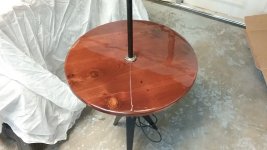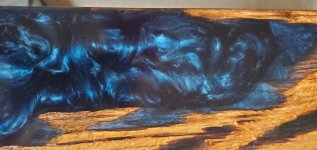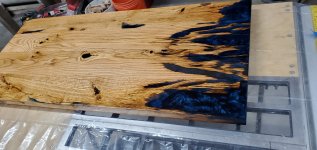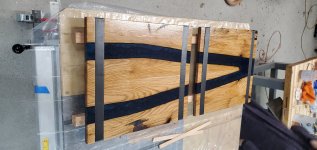redneck joe
Supreme Mariner
- Joined
- Mar 18, 2009
- Messages
- 10,262
thinking about doing an epoxy run in my latest project. More on that in a bit.
I've done live edge things before as well as old oak and walnut barn wood but this is the first time I've had to deal with anything warped this much. I've realized the harder the wood the more likely for inconsistencies and warping>.

I've done live edge things before as well as old oak and walnut barn wood but this is the first time I've had to deal with anything warped this much. I've realized the harder the wood the more likely for inconsistencies and warping>.




























